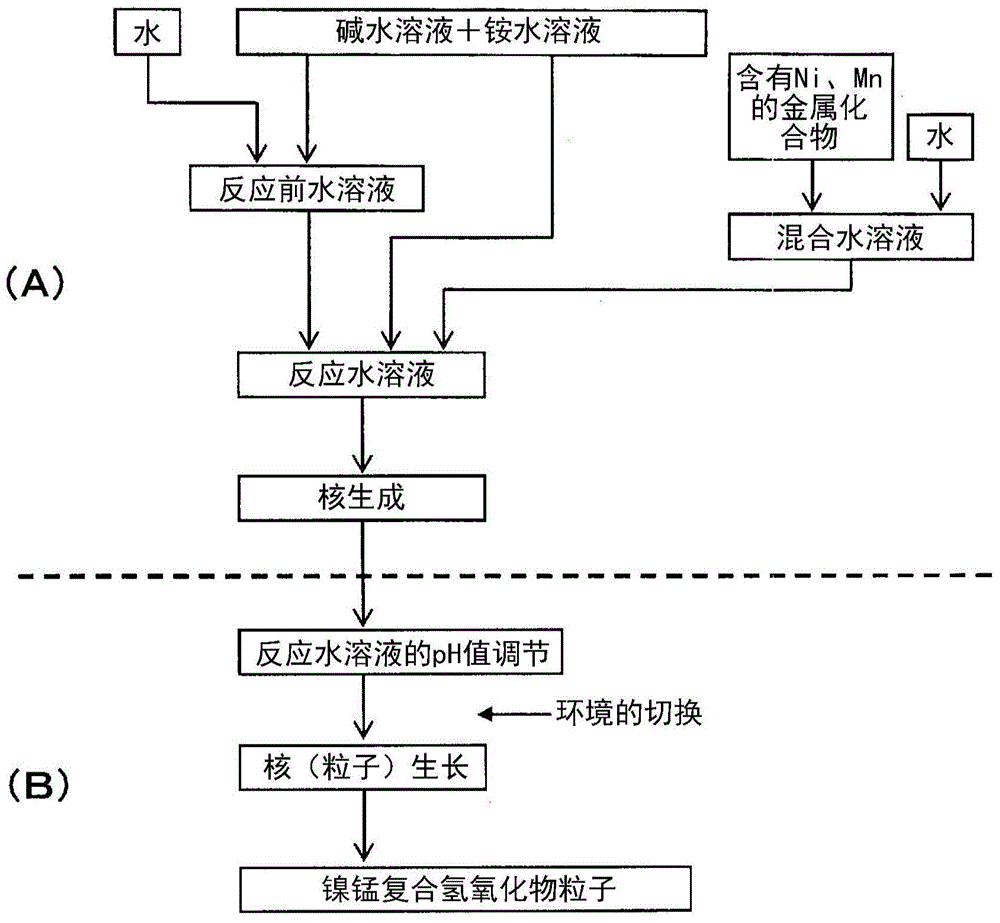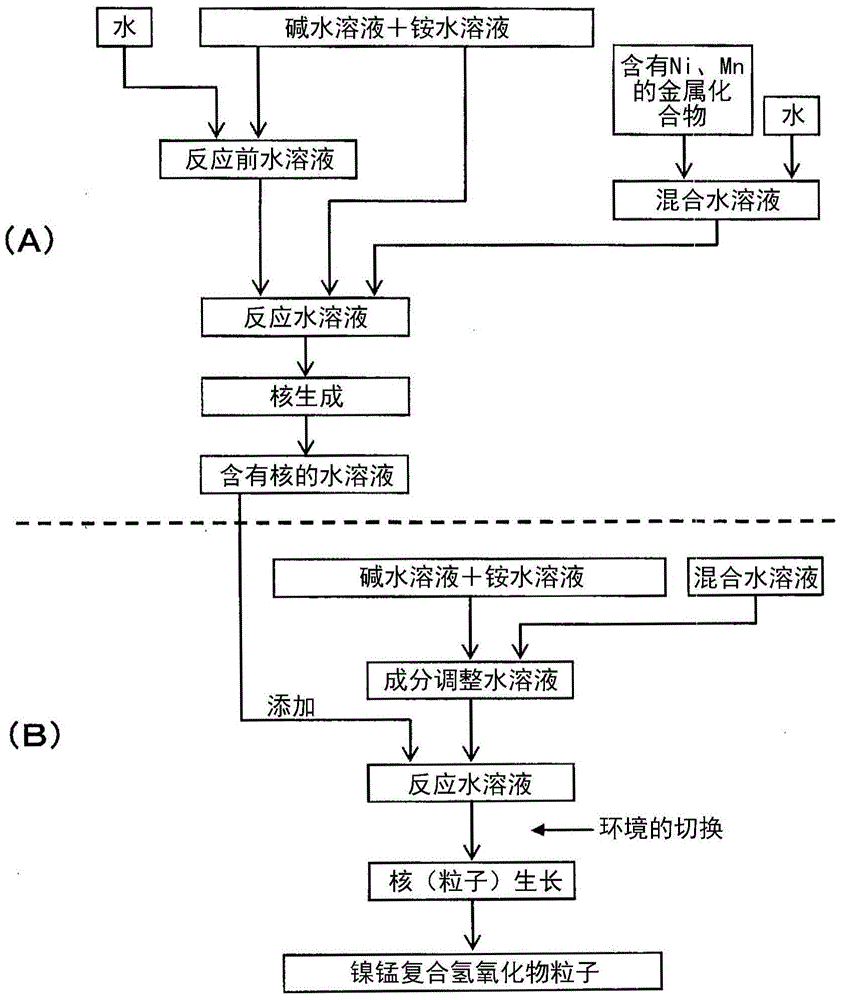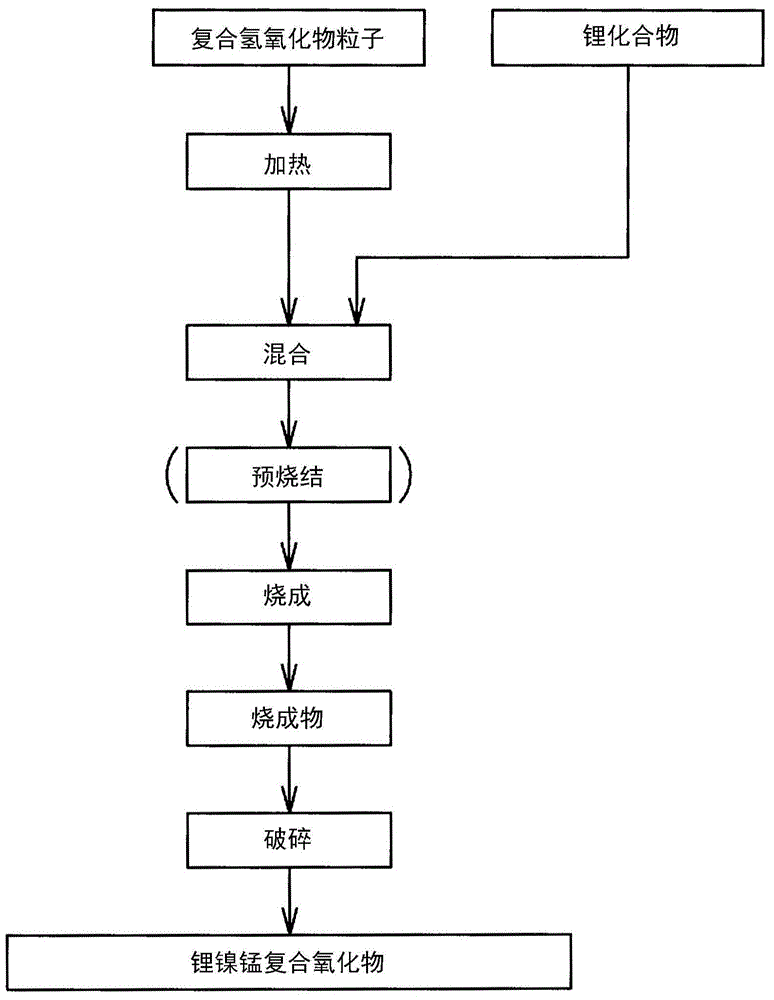Nickel-manganese composite hydroxide particle and manufacturing method thereof, positive electrode active material and manufacturing method thereof and non-water-system electrolyte secondary battery
A technology of composite hydroxide and positive active material, applied in the direction of active material electrode, secondary battery, positive electrode, etc., can solve the problems of high particle size uniformity, reduced battery capacity, selective deterioration of fine particles, etc., and achieves industrial value The effect of high, high particle size uniformity, and excellent battery characteristics
- Summary
- Abstract
- Description
- Claims
- Application Information
AI Technical Summary
Problems solved by technology
Method used
Image
Examples
Embodiment 1
[0278] [Production of composite hydroxide particles]
[0279] Composite hydroxide particles were prepared as follows. In addition, various special grade chemicals manufactured by Wako Pure Chemical Industries, Ltd. were used in preparing the composite hydroxide particles, the positive electrode active material, and the secondary battery in all the examples.
[0280] (nucleation step)
[0281] First, water was added to the reaction tank (34 L) to half the volume, and the temperature in the tank was set to 40°C while stirring. At this time, an atmospheric environment (oxygen concentration: 21% by volume) was formed in the reaction tank. The pH of the reaction liquid in the reaction tank was adjusted to be 13.0 based on the liquid temperature of 25°C by adding appropriate amounts of 25 mass % aqueous sodium hydroxide and 25 mass % ammonia water to the water in the reaction tank. Furthermore, the ammonia concentration in this reaction liquid was adjusted to 15 g / L, and the pre-...
Embodiment 2
[0320] A positive electrode active material for a non-aqueous electrolyte secondary battery was obtained in the same manner as in Example 1, except that lithium hydroxide and composite oxide particles were mixed so that Li / Me=1.25, and the firing temperature was set to 850°C. , and evaluated. The obtained positive electrode active material had a composition of 8.84 mass % of Li, 29.9 mass % of Ni, and 28.0 mass % of Mn, and was confirmed to be Li 1.25 Ni 0.50 M 0.50 O 2 .
Embodiment 3
[0322] In the particle growth process of the composite hydroxide particle production process, except that switching from the atmospheric environment to the nitrogen environment was performed at a time point of 6.25% of the total time of the particle growth process, it was carried out in the same manner as in Example 1 to obtain non-ferrous metals. Positive electrode active materials for aqueous electrolyte secondary batteries were evaluated. In addition, the compositions of the obtained composite hydroxide particles and the positive electrode active material were the same as in Example 1, and the composite hydroxide particles were composed of a center portion and an outer shell portion as in Example 1, wherein the center portion was made of needles. The outer shell portion is composed of plate-shaped primary particles (particle size: 0.7 μm) larger than the fine primary particles on the outer side of the central portion.
PUM
| Property | Measurement | Unit |
|---|---|---|
| particle size | aaaaa | aaaaa |
| particle size | aaaaa | aaaaa |
| particle size | aaaaa | aaaaa |
Abstract
Description
Claims
Application Information
 Login to View More
Login to View More - R&D
- Intellectual Property
- Life Sciences
- Materials
- Tech Scout
- Unparalleled Data Quality
- Higher Quality Content
- 60% Fewer Hallucinations
Browse by: Latest US Patents, China's latest patents, Technical Efficacy Thesaurus, Application Domain, Technology Topic, Popular Technical Reports.
© 2025 PatSnap. All rights reserved.Legal|Privacy policy|Modern Slavery Act Transparency Statement|Sitemap|About US| Contact US: help@patsnap.com



